Our first stop after leaving Pakse was Salavan.
Salavan took half a day to reach, and was a quiet, unremarkable town, except for the wide variety of unusual and no-doubt endangered jungle animals for sale in the market.
.JPG)

This creature was still alive.
Come to think of it, I saw more unidentifiable animals for sale as food in Southern Laos markets than I have seen anywhere else in Asia, or the world, for that matter, Africa included.
We took public transport the whole way; the buses becoming increasingly smaller and more crowded as we travelled east towards Salavan, although the journeys were always made more interesting on account of our fellow travellers.
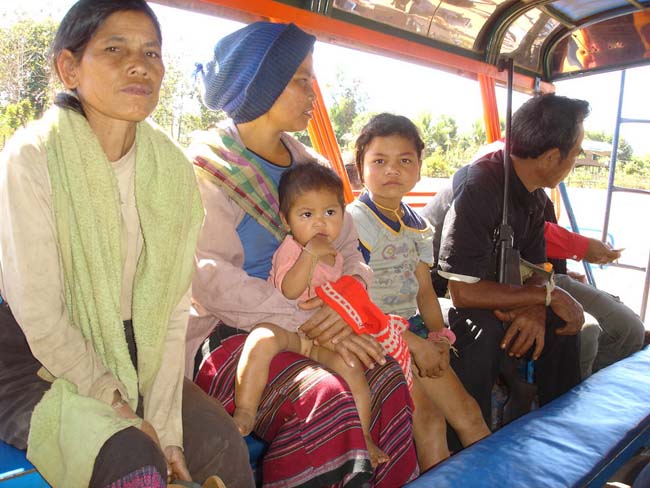
Note the hunting rifle.
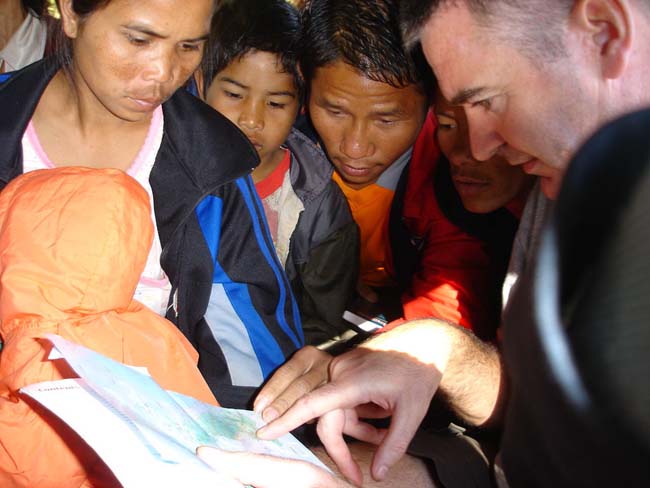
Ever-helpful fellow bus passengers fascinated by my map on the way to Salavan.
In and around Salavan I noticed a number of Vietnamese monuments and Vietnamese graveyards.
I didn’t think much about them at first, believing the war was confined to a narrow corridor along the border area, and knowing Salavan was a considerable way from Vietnam.
Also, it’s common in some parts of Thailand, in Nong Khai, for example, to see Vietnamese graves which have nothing to do with the war.
Because Salavan was the nearest main town to the border with Vietnam, I simply assumed this was where many Vietnamese traders had settled, and these monuments and graves related to Salavan’s Vietnamese community.
Once we’d found some pretty humble lodgings in Salavan we tried to arrange transport to Tahoy, a remote, small town, lying on the Ho Chi Minh Trail, up Route 15.
According to our guide book, Tahoy is so off the beaten track you have to ask villagers to show you war remains by drawing pictures of bombs and tanks. There are also supposed to be lots of tigers still in the jungle near the town.
Unfortunately, nobody would go to Tahoy because the dirt road was completely impassable without a four-wheel drive vehicle at that time of year.
Disappointed, we walked around Salavan village centre and spent some time in the UXO Laos war museum (I call them war museums, but they’re more like open-air UXO Laos compounds full of war detritus), which is where I took the below photographs.
If anyone can identify this ordinance, especially the various rockets and mortar rounds, I’d be grateful.
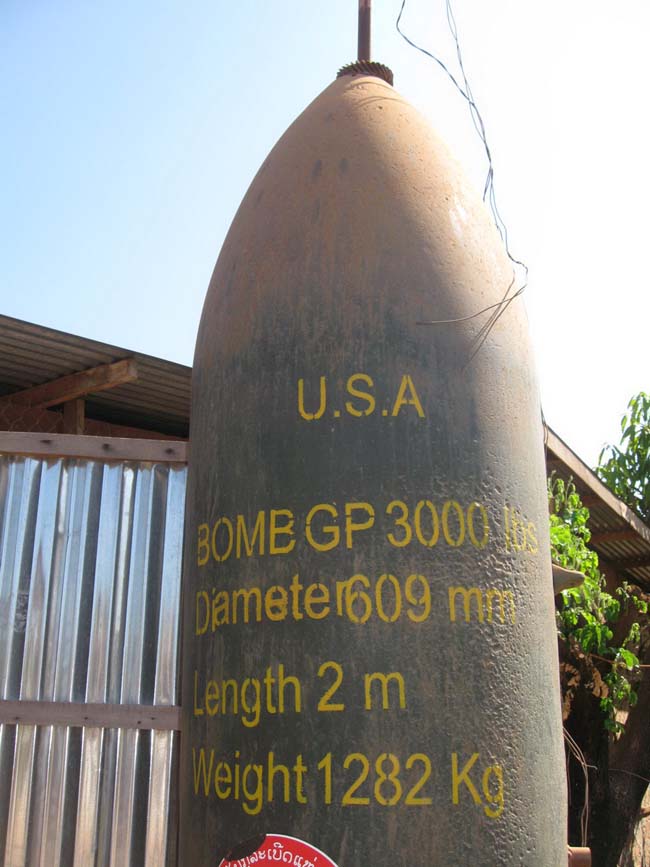
3,000 pound bomb, presumably dropped from a B52.
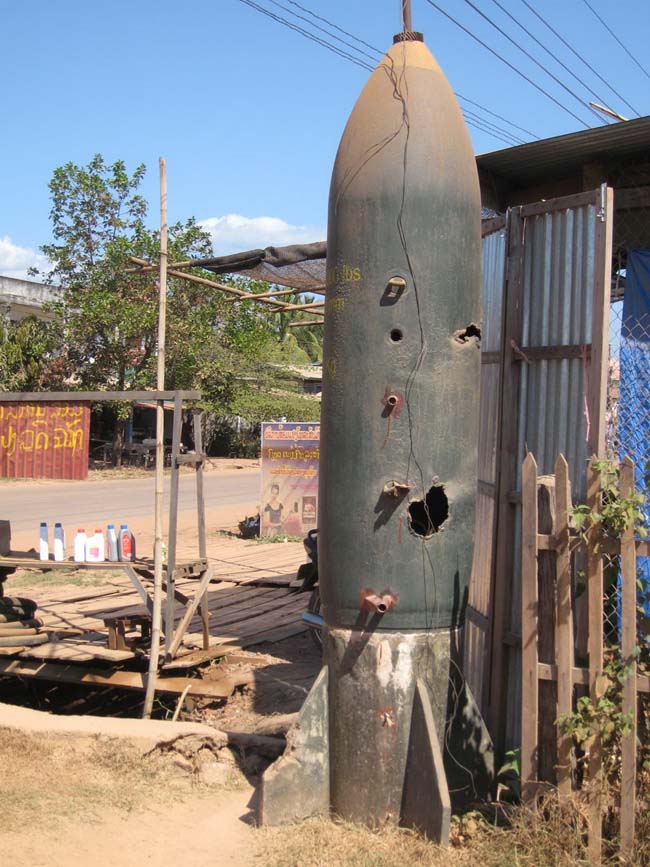
3,000lb bomb, full length.

For scale. On the left, the 3,000 pound bomb, on the right a 2,000 pound bomb. I wondered why they were shaped so differently.
.JPG)
.JPG)
.JPG)
.JPG)
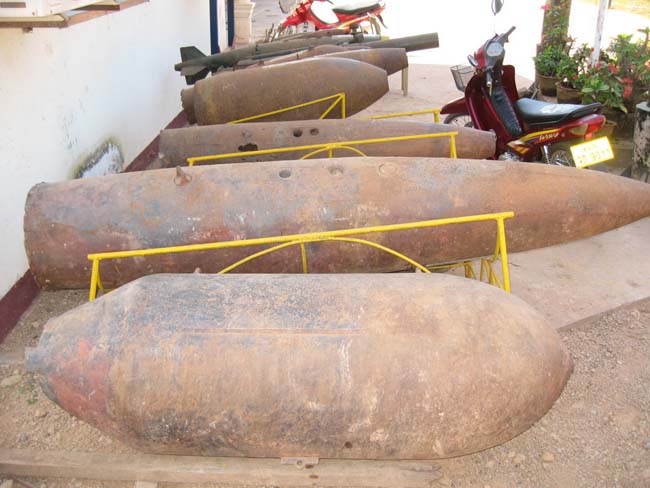
I’m sorry I didn’t get a closer shot of the rocket with the tail fins at the far end of this display, but I was just getting into it in Salavan.
We then spent the night in town, and next morning we headed to Sekong.
The day started badly when we were told the below wooden contraption would be our mode of transport.
.JPG)
If I’d have been on safari in Africa, fine, but bone-shaking down the dusty, wheel-rutted, crater-riddled roads of Southern Laos in this vehicle was not an appealing prospect.
In the end we drove most of the way in a much smaller but more modern vehicle with bench seating inside, called a songthaew, which we usually shared with chickens, long pieces of bamboo, baskets and dead animals, all being transoported to local markets, as well as many hilltribe passengers, usually amazed to see us as they climbed into the vehicle.
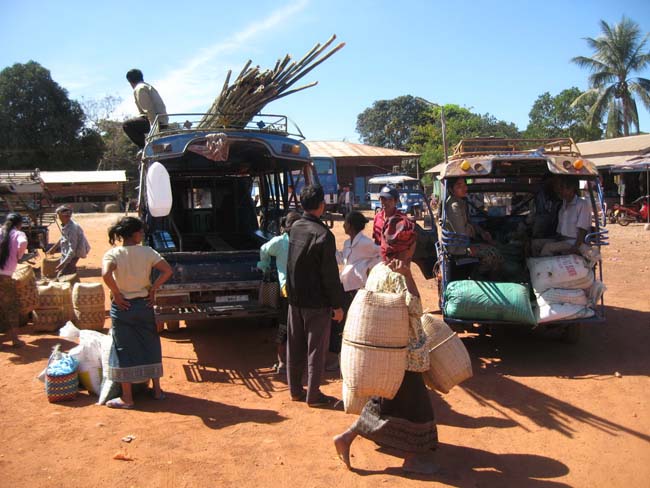
We spent a few cramped hours in the Songthaew on the left, on of our journeys.
The scenery from Salavan to Sekong was interesting, but we felt we were doing some seriously remote travelling the further south we went. We didn’t see any other tourists for a couple of days, which was unusual for Laos.
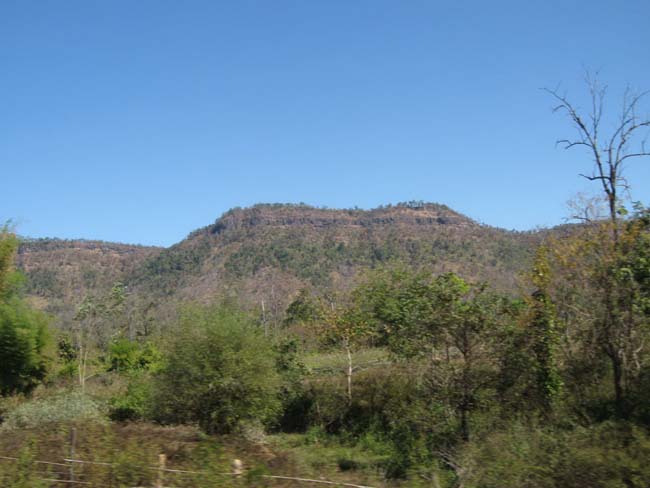
On the way to Sekong
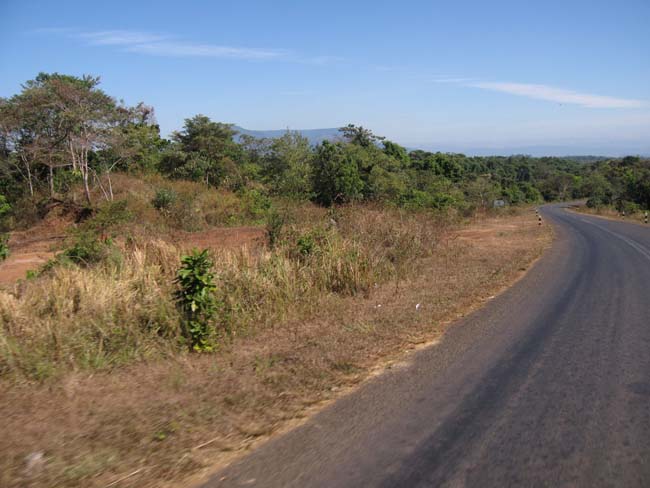
Some of the journey was on tarred roads.
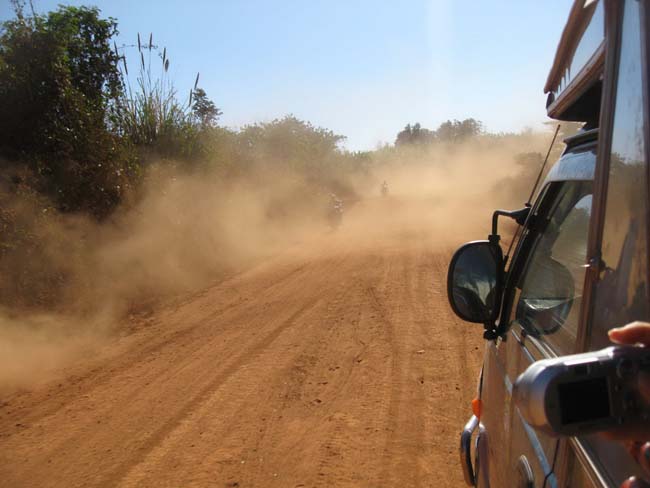
But other sections looked like this.
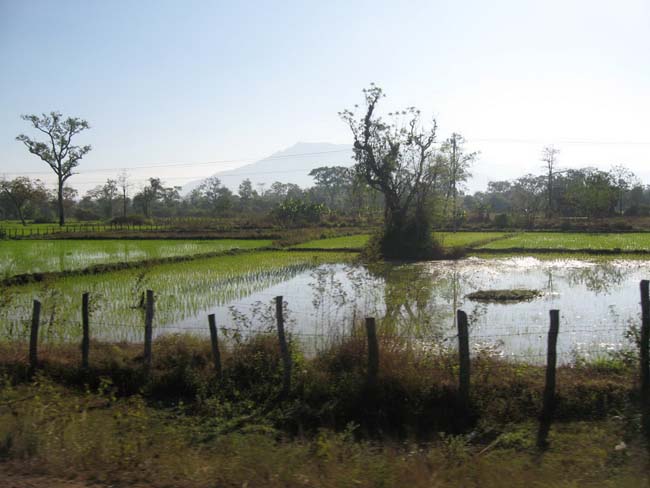
Ricefields on the way to Sekong.
At long last, after an uncomfortable journey on winding, potholed roads, we arrived in Sekong, which was another very quiet town.
What Sekong lacked in creature comforts and infrastructure was more than made up for by the generosity and hospitality of its inhabitants.
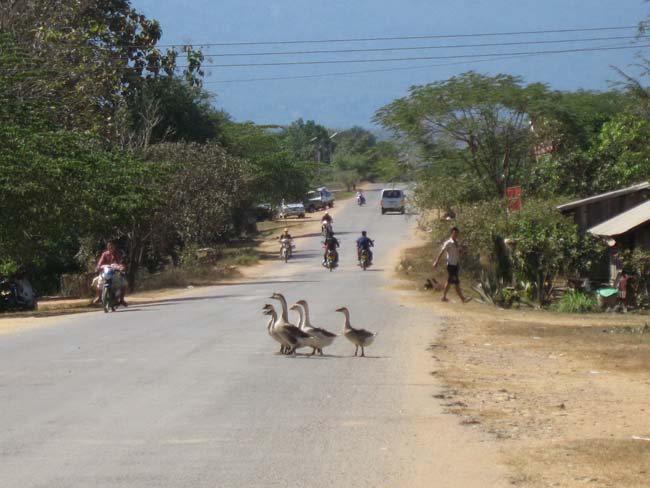
Sekong Welcoming Committee
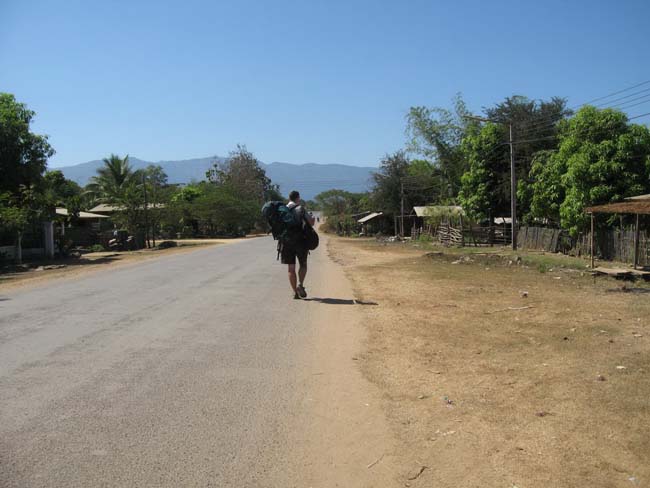
Heading into town to find somewhere to stay.
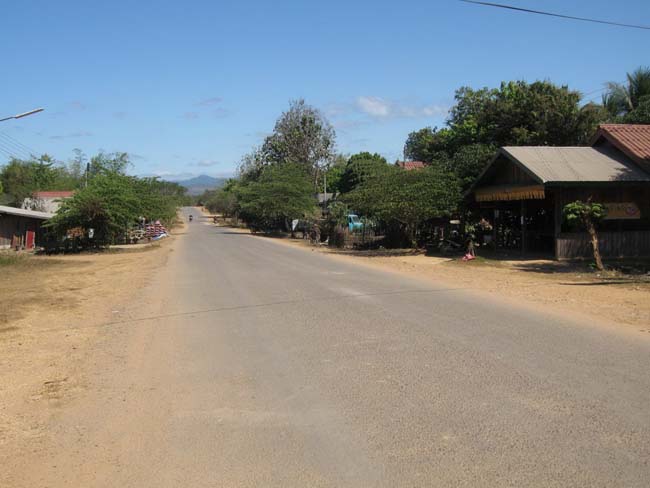
Main road through Sekong.
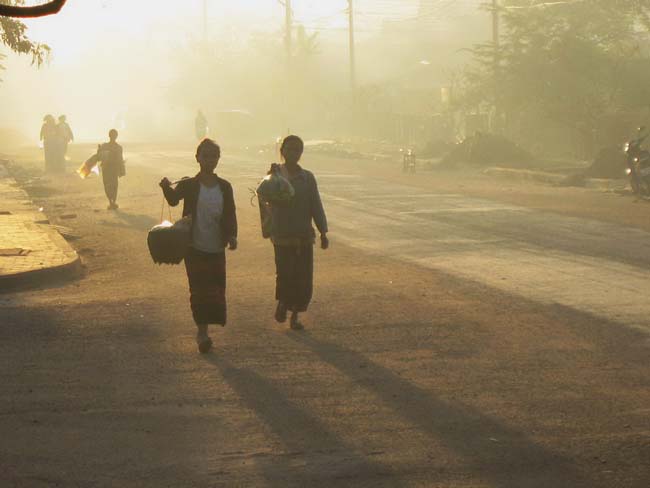
Sekong women on their way to a morning market.
Once we got settled into our extremely basic accommodation, we headed out get our bearings and to have lunch by the side of the picturesque Sekong River.
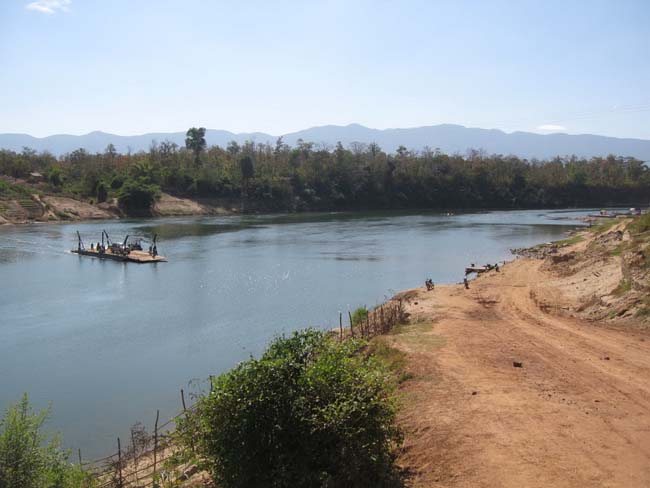
Sekong River View, looking west.

Another river view, looking east.
After lunch we went to find the UXO Laos war museum we’d passed on the way into town and it was there that the scales fell from my eyes as I realized all the monuments and graves we were seeing were for Vietnamese soldiers killed in the war, presumably on and around the Ho Chi Minh Trail.
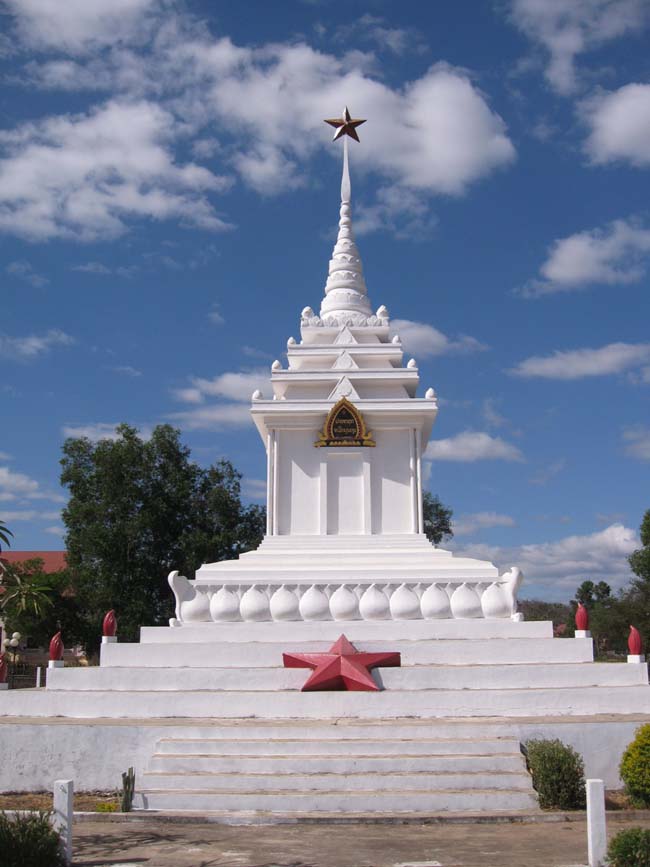
Vietnamese war memorial in Sekong.
After we’d visited the UXO compound in Sekong, and saw the small, informative display about the bombing, the Ho Chi Minh Trail in Southern Laos, and the work of the UXO teams, I was hooked, and decided to see as many war remains as I could in Southern Laos.
This stood me in good stead for our forthcoming trip to Attapeu, due to the number of unusual war remains and relics in the area, which I will deal with in the next instalment.
Below are a few items from Sekong’s collection of war items in the UXO Laos compound.
.JPG)
.JPG)
.JPG)
.JPG)
.JPG)
.JPG)
.jpg)
.JPG)
.JPG)
© Peter Alan Lloyd
palloyd2002@yahoo.co.uk
|

